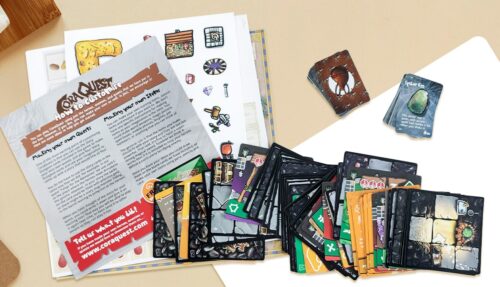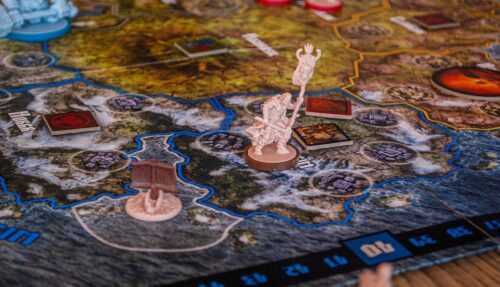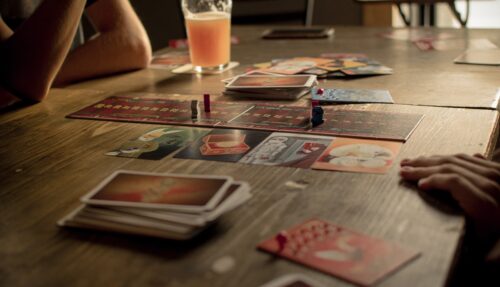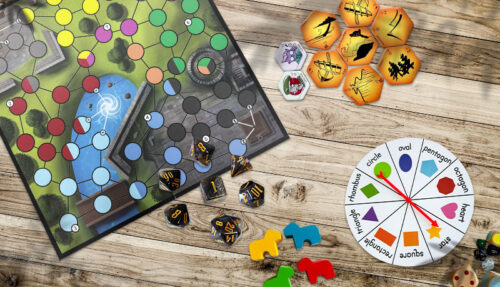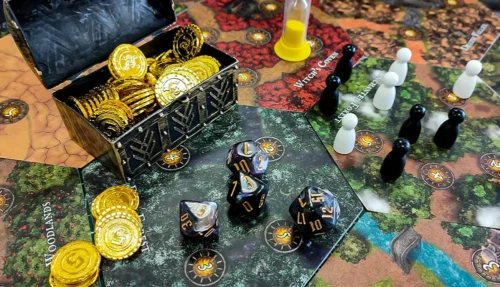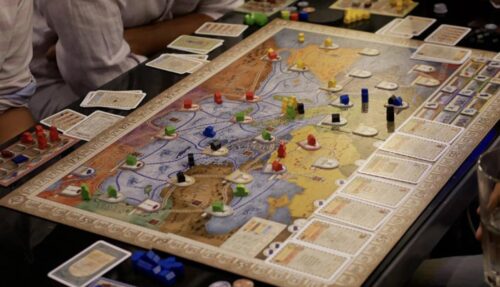A thorough grasp of the various board game mechanics is essential for any game designer to understand. Here, we explain everything you need to know about this important aspect of tabletop game design
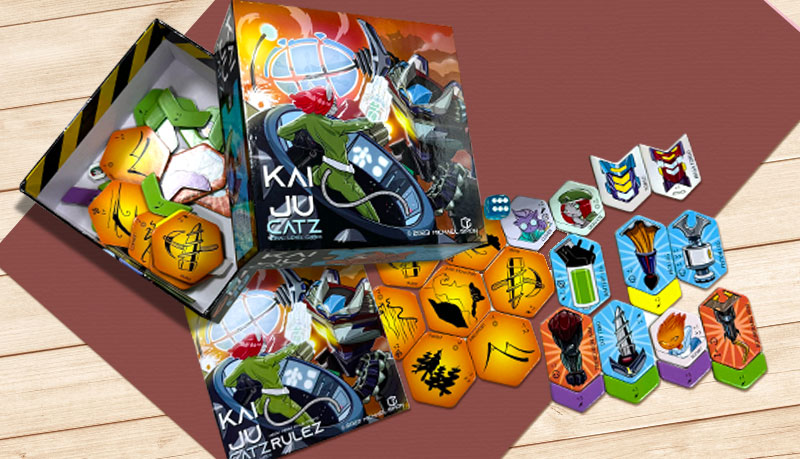
Board games may be older than you think. Ever heard of the “Royal Game of Ur”? Well, it’s widely considered being the oldest known board game, dating back some 5,000 years and discovered in the territory once known as Babylon. It even has a rule book, written by an astronomer! It’s a basic race game, with each player taking turns and trying to get their pieces all the way around the board before their opponent. They do this by throwing “lots” (possibly a primitive form of dice) that give results of 0 to 3. Each number indicates the kind of move a player can make. If you land on a “rose” then you get another throw of the lots. So not only is it the oldest board game yet discovered, it has the oldest rule book, and, by extension, the earliest game mechanics ever recorded: throwing lots, taking turns, and special squares.
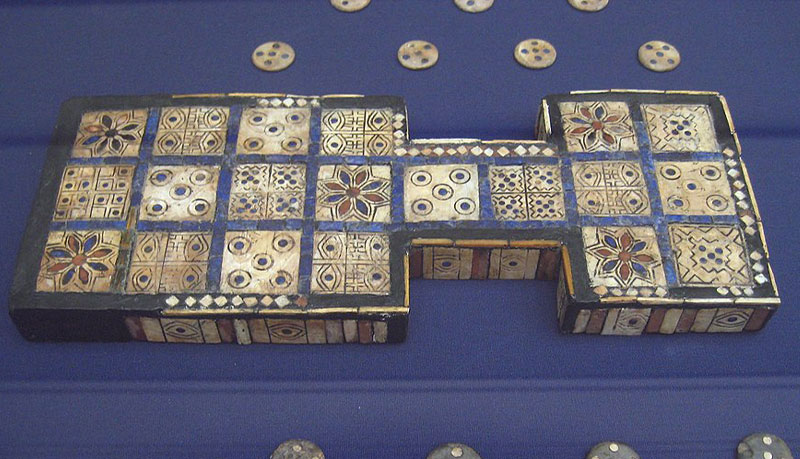
Since the days of the ancient Babylonians then, people all around the world have been inventing and playing board games. And over the millennia, a vast range of more-or-less simple and complex mechanics have been devised to coordinate play. Whether you’re a novice or part time game designer or an experienced expert, you must understand not only the concept of mechanics in board game design but also have a good working knowledge of the current and most popular mechanics in use. After all, there’s no point, as they say, re-inventing the wheel! (The wheel, incidentally, was invented in Mesopotamia some time before 3,500 BC).
So, in this post, we’re going to explore the whole gamut of board game mechanics. We’ll explain how they’re defined, give concrete examples to help you understand them, and we’ll also look at how you can incorporate and combine them into your own board game designs in ways that help to make the game not only playable but challenging, interesting, and fun. Still, before we answer the question, “What are the different kinds of board game mechanics?” let’s answer a more fundamental question: what exactly are board game mechanics?
What are board game mechanics?
So giving the simplest possible answer: board game mechanics are the rules and actions that govern how you play a game. They dictate when you have a turn, what you can and can’t do in that turn, the outcome of your actions, and what are the consequences, positive and negative, of those outcomes. They also work, together with the specifics of the rules, to govern the routes open to winning and the limitations placed on who can when, when, and how. Still need this explaining a bit more? Stay with us!
Think of any machine. Just like the mechanics of a machine – motors, cogs, levers, brakes, etc. – game mechanics should work together to create a functional game. So in a car, for example, there are mechanics that enable the car to move forward or backward and there are those that limit the speed or alter the gear, there are brakes to stop it, and a cooling system so it doesn’t overheat. This means that the mechanics of a car both enable it to function but also limit its functions. Likewise, game mechanics make a game, and winning the game, possible, but they also set restrictions which guide action, limit options, and drive meaningful interactions between the players. From rolling dice to dealing or picking up a card to moving a piece in one direction or another to losing or gaining points, each mechanic contributes to the overall dynamics of a game and provides players with opportunities for movement, decision-making, strategy, competition, collaboration, and an enjoyable sense of excitement and engagement with the “world” or theme of the game. Basically, without the mechanics, nothing could happen and no-one would know what to do! Or, everyone could do whatever the heck they wanted whenever they liked and it would be complete chaos! Now, you’ll almost certainly have seen by now that mechanics themselves are governed by rules. So, let’s look at that relationship next.
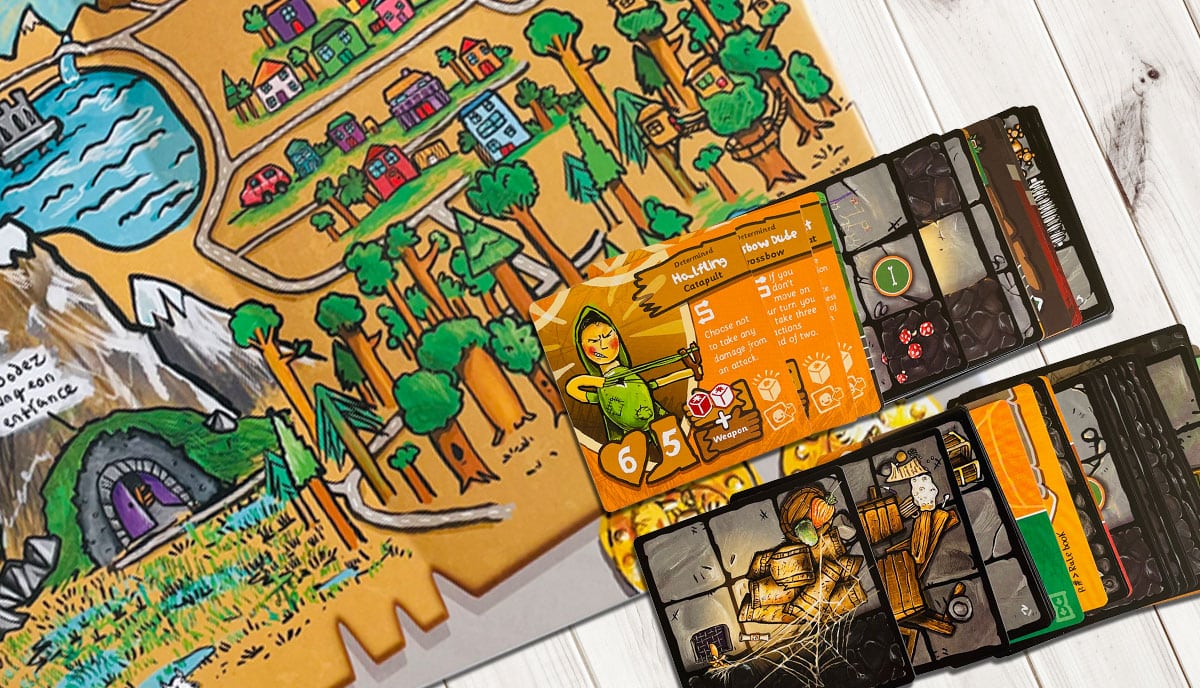
Mechanics and rules
In board game design, mechanics and rules are intimately connected. Between them, they create the essential foundation on which every functional game is built. As we’ve seen, mechanics help to define, facilitate, and limit the actions and interactions available to players, while rules govern how players can execute the mechanics, to what extent, and in what order. Without mechanics, all the players could just do whatever they like and without rules, gameplay would be completely chaotic and meaningless. So, together, mechanics and the rules which guide their implementation shape the gameplay experience, defining the boundaries, limitations, and possibilities within the game. In a sense, they are the game. You can have a beautiful board, a set of dice, miniatures, counters, whatever you want; but you couldn’t play without mechanics and rules. But if you have sound mechanics and sensible rules, you can often play the game even without the components. Think of the early fantasy role-playing games where all you needed was the rule book—explaining the mechanics and how to apply them—and your imagination to play. A well-designed set of mechanics and rules makes sure that you end up with a balanced and enjoyable game, while a poorly executed combination can lead to confusion, frustration, or imbalance. That’s why you can, and probably should, start to playtest before you’ve created beautiful components; DIY components and substitutes borrowed from pre-existing games are often all that you need to get started. The true heart and soul of any game are the mechanics and the rules that govern how they work.

Balancing challenge and possibility
We’ve touched on the way that mechanics and rules create an operative framework for a game in which player have opportunities to make decisions and take actions in order to try to achieve the win condition. We’ve also pointed out that to create a workable game, players need opportunities but also limitations on what they can and can’t do. So now, let’s go a bit deeper into how to get the balance of these two opposing forces right in your board game design, because finding the right balance between challenge and possibility is vital to your game’s success. Go too far in one direction and it’ll be too easy and thus boring; too far in the other, and it will be impossibly frustrating and put players off.
Mechanics should provide players with meaningful—or at least seemingly meaningful—choices and opportunities for developing strategies and making decisions about what to do, while also presenting challenges and obstacles that limit player actions and require thoughtful planning and adaptability to overcome. If your mechanics and rules are too restrictive, then there’s no room for the players to exercise their creativity and the game won’t be much fun. If they are too loose and open-ended, then your players will be confused and the gameplay will collapse into chaos. This delicate balance—when you get it right—keeps players engaged and invested in the game’s outcome, fostering a sense of accomplishment and satisfaction when they overcome obstacles or outmaneuver opponents. So, how do you find the balance?
The answer is that there’s no single rule governing how to get the balance of challenge and opportunity right. The only way to do it is to set up your first iteration of mechanics and rules and then play the game—and ideally get others to play it. You’ll soon discover what seems to work and what doesn’t. Then you revise the mechanics and rules and play it again—ideally with another group of players. Takes notes, get creative, and generate the next even more refined iteration. Rinse and repeat until you have either landed on your perfect combination or realized that the game concept itself is fundamentally flawed and you need to go back to the drawing board. That’s the necessity and value of playtesting in board game design. There’s no way round it. It’s the fundamental and most important aspect of the whole process.
Mechanics and game length
How long does a game take to play? How long ought it take to play? How can you decide and engineer a game that plays out within certain predetermined temporal parameters? These are all good questions and important ones to answer. Gameplay length shouldn’t be random. You’ll need to tailor it with great care to suit your players’ age group, lifestyle, the genre of your game, and the strength of your initial premise. And this is another way in which mechanics—and your choices from the different types of board game mechanics—have a major impact on the development of your game.
So, let’s look at the impact of mechanics on the game’s length. This is a very important factor which is often overlooked by newbie game developers and game designers. While some games—such as campaign-based role-playing games, for example—may go on for several sessions over days or even weeks; most should last between half an hour and a couple hours at the most, so that a family or a group of friends can enjoy the play from start to finish in a single evening. Other games may take less time; perhaps just ten minutes or a quarter of an hour to complete.
The choice and complexity of mechanics can significantly influence the duration of gameplay. Obviously, mechanics that offer quick and simple actions—such as one action per turn decided on the roll of a single die—tend to result in shorter games, while mechanics that involve extensive decision-making or resource management can extend the playtime. You must think and plan well to strike the right balance, as games that are too short may leave players dissatisfied and wanting more, while excessively long games can become tedious or lose the players’ attention. As a general rule of thumb: the more free-choice elements your mechanics introduce to the game (and the more mechanics there are overall) the longer the game will be; the fewer the number of the mechanics and the more tightly controlled they are, the shorter the game. The win condition also affects the duration of play. So, for example, if your players must collect “x” number of objects to win, you’ll get a certain length of game. Increase the number of objects and you’ll likely increase the game’s duration. Add further conditions; say, for example, that they must collect “x” number of objects and get all the objects back to base, and you have a longer game again.
The answer to getting this right is the same answer that we’ll always give you about getting any aspect of your game right (because it’s always true!) and that is: playtest. Try the game out on different groups of players while timing each game. On the basis of your observations, notes, and player feedback, you can then adjust the variable—mechanics, rules, number of players, win conditions—until you get a game that functions well, is fun to pay, at is more-or-less guaranteed to conclude within a given timeframe.
The importance of player choice
In the last couple of sections we touched on the idea of giving players meaningful—or apparently meaningful—choices. This is what is known as “player agency”. Player choice—or at least the illusion of choice—is a fundamental aspect of board game design, and the different types of board game mechanics play a vital role in shaping the choices that players have available to them. Mechanics should provide meaningful decisions that affect the game’s outcome, allowing players to exercise their agency and have the opportunity to create alternative strategies and courses of action. Those choices could be extremely simple; for example, to pick a card from one or another packs, or to roll the dice for a second chance or play safe and accept the current outcome. Or they could be more complex, involving real-time impactful negotiations between player characters in a role-playing game.
Player agency is a professional game design term which refers to the player’s ability to make meaningful decisions and influence the outcome of the game. By incorporating mechanics that provide players with choices, decisions they must make between multiple options, strategic moves, and a sense of control, you can empower players to shape their own gameplay experiences and guide the outcomes as a natural response to their actions. Mechanics that offer multiple paths to victory, branching narratives, or dynamic player interactions—while more complex and difficult to devise and perfect—are an absolute must if you want to enhance player agency, making the game more immersive and satisfying for everyone involved.
But whether it’s choosing between different actions, bidding on resources, or negotiating with opponents, selecting the right set of mechanics that offer a range of choices will help to create an interesting and fun game that keep players invested in what’s going on and imaginatively immersed in the game world. The older the players, the more elements of choice and strategic decision-making you’ll need to engage them throughout game play and leave them feeling that they enjoyed a positive challenge.
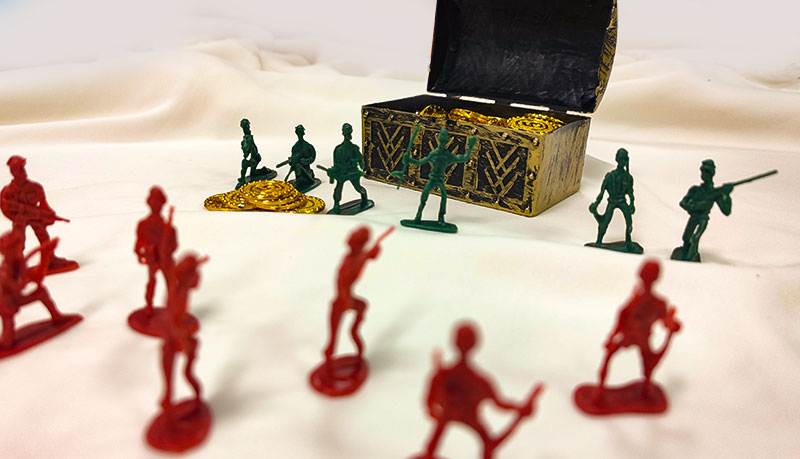
Integrating mechanics with theme and story
A well-designed board game seamlessly integrates the different types of board game mechanics with the game’s theme and story, which are the other essential elements of any successful game design. Mechanics that grow out of the theme and are in harmony with it, create a sense of cohesion and authenticity in any game, which is vital to maintaining the “imaginative credibility” of the experience for the players. This is less important for purely strategic games—although even chess has a “medieval battlefield”theme with its kings and queens, bishops, knights, and castles. If you succeed in integrating your game’s mechanics with the theme, you find that you’ve made players feel like active participants in the game’s narrative; protagonists in the unfolding story, if you like.
Thematic integration, then, is the art and science of designing mechanics, which are a seamless fit with the game’s theme, creating an uninterrupted flow of experiences which all “make sense” within the game’s imaginative context. When mechanics closely mirror the actions and logic of the game’s narrative or setting, players feel more connected to the game world and the characters they embody. By integrating mechanics with theme through smart, well-planned, and tested design choices, visual cues, and narrative elements, you vastly increase the chances that your game will successfully transport players and leave them feeling excited and satisfied with your game.
We often draw comparisons between game design and structuring a novel. While not an exact comparison, there are many similarities. Just in the same way that the author of a novel wants the reader to identify with the main characters and get deeply involved in the action emotionally and intellectually—to “suspend disbelief” and get lost in the story—a game designer should strive to create a game experience which feels immersive and wholly real to the players. Combining the right mechanics and theme is the secret to achieving this effect. For example, a game with a detective theme (like the classic, Clue), where players must piece together clues and track down the hidden culprit, would be weird if it was all down to the chance roll of a die, but works wonderfully by calling on the players to use memory and deduction as they combine different suspects, weapons, and locations to figure out whodunnit. By choosing mechanics tied closely to the theme, you make your board game into a rich and rewarding experience for your players.
What are the different kinds of board game mechanics?
So, now we’ve described what board game mechanics are and examined how they work and why they matter. Let’s look at the most common and proven effective game mechanics. While you might come up with a new mechanic now and then, most games develop their identity not by novelty mechanics but by intelligent and theme-appropriate combinations of existing mechanics. In this section, we’ll list and explain several of the most popular board game mechanics, providing definitions and examples to illustrate their applications and gameplay dynamics. Let’s open the box, unfold the board, and get the game rolling!
• Dice rolling
Dice rolling is a classic and ubiquitous mechanic in board games, offering an element of chance and unpredictability. Players roll dice to determine outcomes, such as movement distances, combat results, resource generation, or random events. This mechanic adds excitement and tension to the game, as players eagerly watch the outcome of their rolls. Examples of games that feature dice rolling include Monopoly, Risk, and Settlers of Catan.
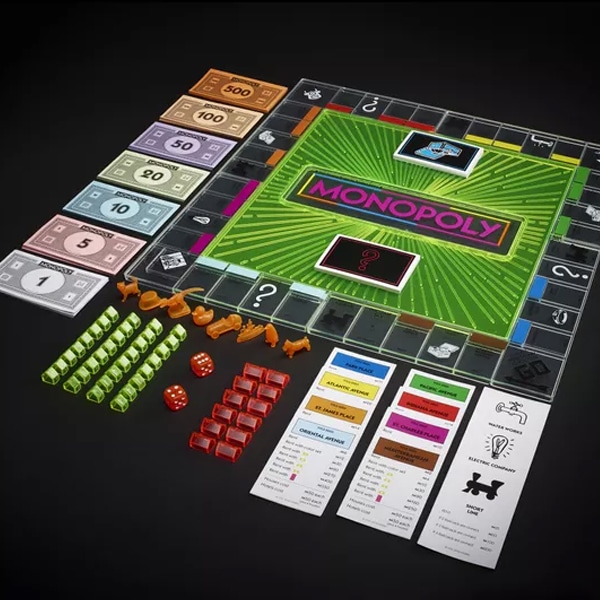
• Tile placement and area control
Tile placement mechanics involve placing and manipulating tiles or cards to create a game board or landscape. Players strategically position tiles to gain control over specific areas, establish connections, or create helpful positions. An excellent example of this mechanic is in the game Carcassonne, where players build landscapes by placing tiles and compete for control over cities, roads, and farms.
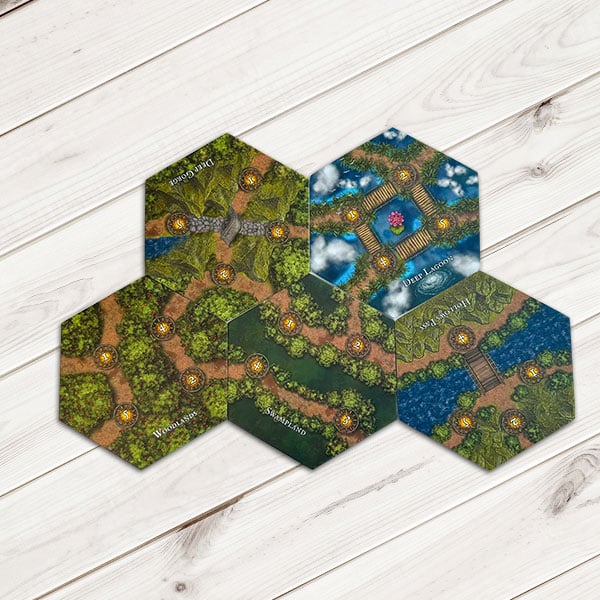
• Card drafting and hand management
Card drafting mechanics provide players with a selection of cards from which they must, for example, choose one and pass the remaining cards to the next player. This mechanic requires players to make strategic decisions based on the options and their long-term objectives. Hand management involves carefully managing and using the cards in the player’s hand to optimize their impact on the game. Games like 7 Wonders and Magic: The Gathering both employ these mechanics to great effect.
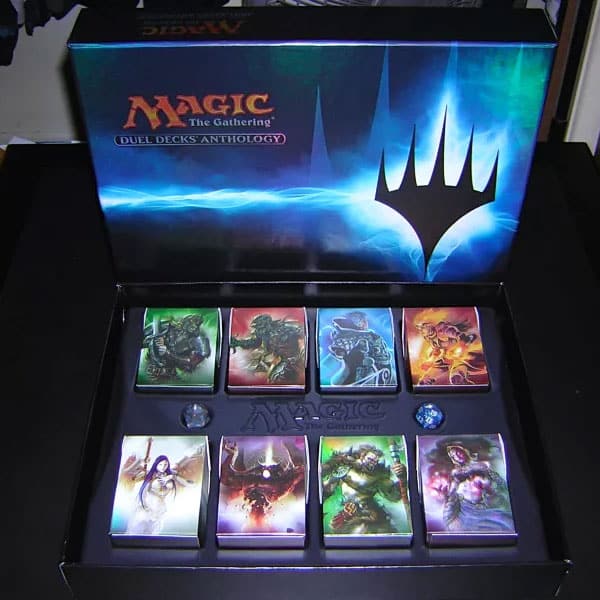
• Worker placement
Worker placement mechanics are when players must assign their limited number of “workers” (i.e., pieces) to various locations on the game board, each offering different actions or resources. This mechanic requires players to make choices about where to allocate their workers to balance immediate benefits with long-term objectives. Examples of games featuring worker placement mechanics include Agricola, Caverna, and Lords of Waterdeep.
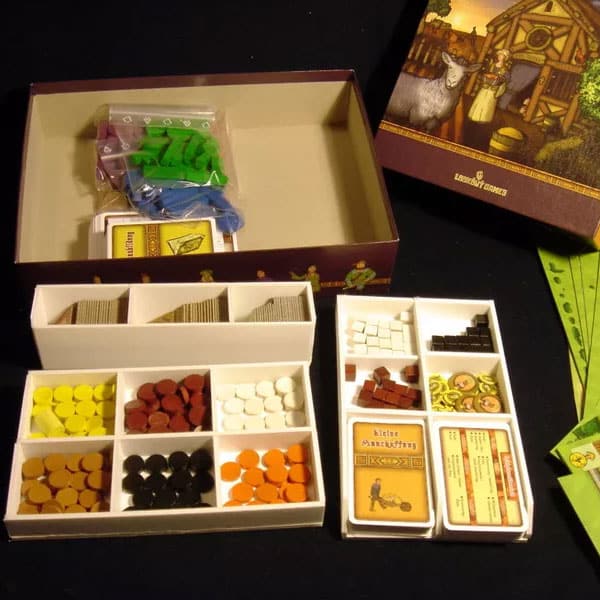
• Role playing and storytelling
Role playing and storytelling—which started out with specific “RPGs” such as Dungeons & Dragons and Call of Cthulhu but have since become common aspects of most modern game designs—are mechanics which help to immerse players in a narrative-driven experience, allowing them to assume the roles of characters and make decisions that shape the game’s outcome. These mechanics often involve character development, dialogue between players in their given roles, and collaborative storytelling. Board games like Gloomhaven, and Tales of the Arabian Nights are both excellent examples of how to integrate role playing and storytelling mechanics into your board game design.
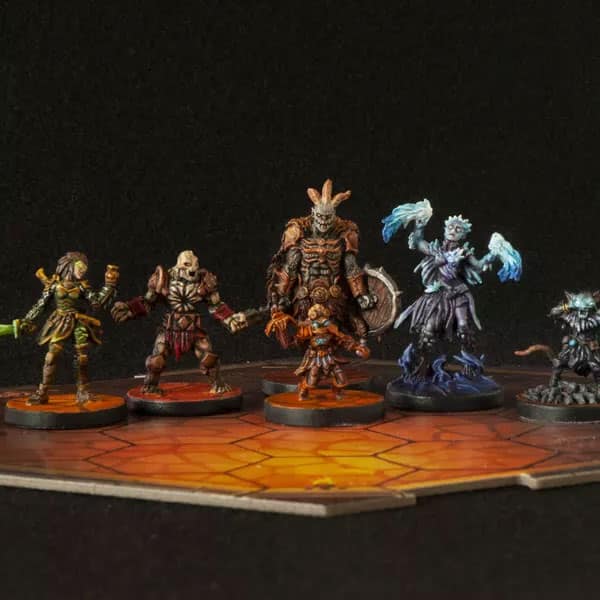
• Auctions and bidding
Auction and bidding mechanics introduce an exciting competitive element to board games, where players bid on resources, actions, or even turn orders. This mechanic requires players to manage their resources and evaluate the value of each bid. Games like Power Grid, Ra, and Modern Art incorporate auctions and bidding as central mechanics, fostering intense rivalries between players and demanding careful and strategic decision-making.
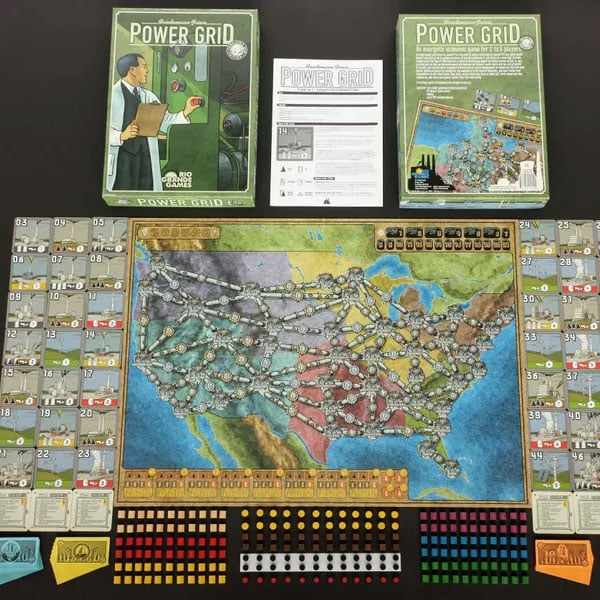
• Cooperative play and teamwork
In contrast to the competitive elements of worker placement, area control, and bidding mechanics, cooperative play mechanics encourage players to work together towards a common goal, fostering collaboration and teamwork. Players must coordinate their actions, share resources, and strategize collectively to overcome challenges and achieve victory. Typically, there’s no single winner in this kind of game. The aim, or win condition, may only be achieved by a well-coordinated group effort. Popular examples of cooperative games include Pandemic, Forbidden Island, and Spirit Island, where players must join forces to combat threats and save the world.
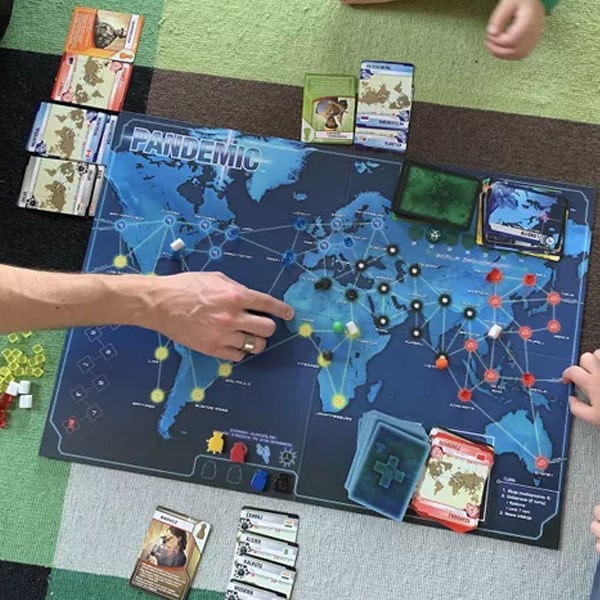
• Hidden movement and deduction
Hidden movement and deduction mechanics create an atmosphere of mystery and intrigue, where players must deduce the whereabouts or identity of hidden elements or opponents. This mechanic often involves asymmetrical gameplay, with one player taking on a hidden role or position—namely, one player alone may be “the murderer”, “the spy”, or “the thief” and the other players must work either individually or collectively to figure out who it is. Games like Scotland Yard, Fury of Dracula, and Letters from Whitechapel employ hidden movement and deduction mechanics, challenging players to unravel secrets and outsmart their opponents. A more traditional example of deduction mechanics would be the world-famous “whodunnit” game, Clue.
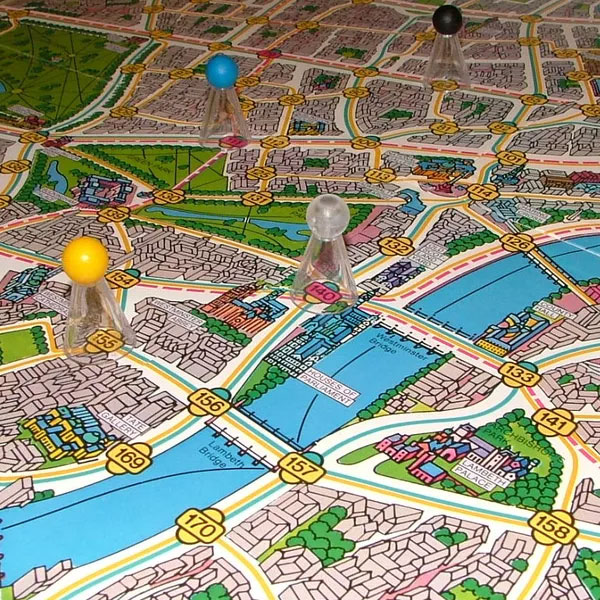
• Resource management and economy
Players need to allocate and use limited resources efficiently in order to achieve their aims in resource management mechanics. Players must decide how to gain, trade, and otherwise use resources to make their progress in the game. Games like Settlers of Catan, Puerto Rico, and Splendor are all based heavily on resource management mechanics to create games which are exciting, competitive, and need plenty of planning and concentration to win.
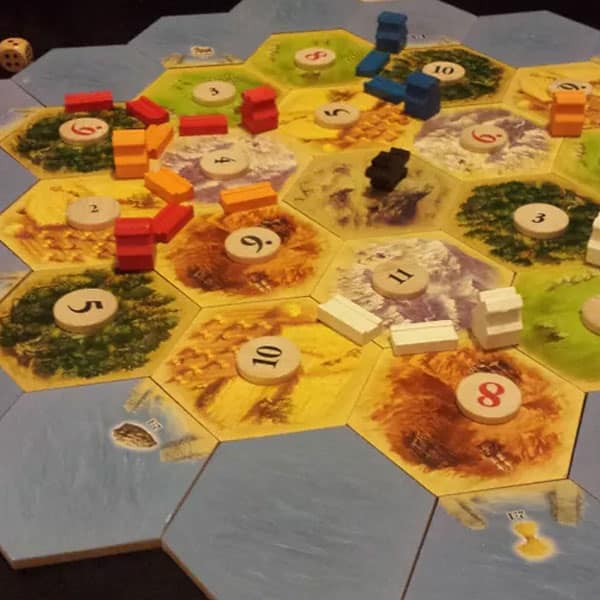
• Deck building and customization
Deck building mechanics are when players must construct and improve their own deck of cards or pool of resources over the course of the game. Players start with a basic set of cards or resources and must gradually add new and more powerful ones to their deck in order to advance themselves toward the win condition. This mechanic involves quite a lot of strategy work, careful planning, risk-taking, adaptability, which creates unique gameplay experiences with each play through. Games like Dominion, Legendary: A Marvel Deck Building Game, and Clank! are good examples of game which effectively showcase the versatility and excitement of deck building mechanics.
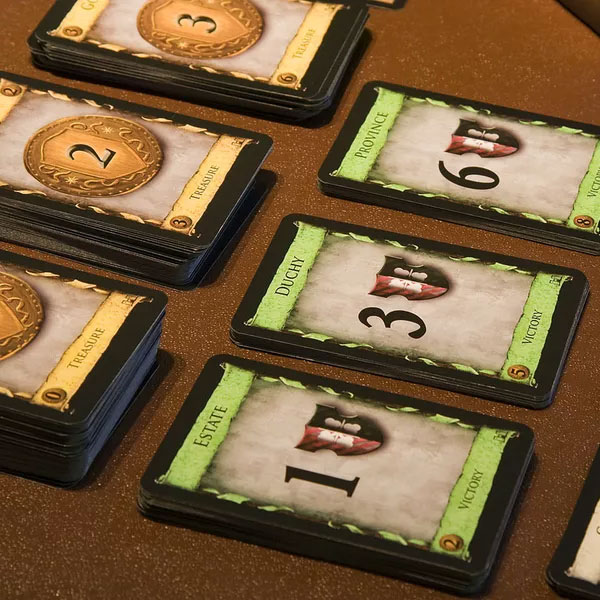
• Set collection and pattern building
With set collection mechanics you have a situation in which players must attempt to gather specific combinations or sets of items—usually but not always, cards—in order to score points, advance moves, open opportunities, increase powers, or otherwise achieve their aims. This is a mechanic with many potential variations, but all of which encourage players to develop long-term strategies and prioritize certain items while managing limited resources. Games like Ticket to Ride, Splendor, and Sushi Go! feature set collection mechanics, challenging players to assemble the most valuable combinations to win the game.
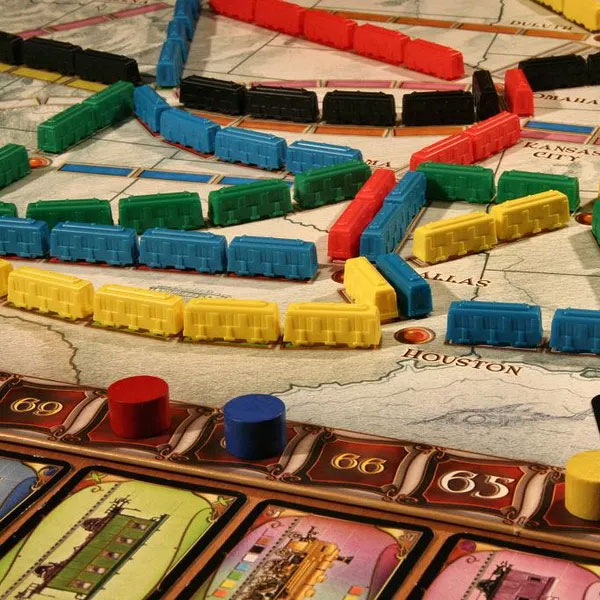
• Negotiation and diplomacy
Negotiation and diplomacy mechanics are unique as they introduce social interaction and player negotiation into the gameplay experience, which adds a powerful human element to the game and lifts it beyond the simple logical engineering of most other mechanics. In games that rely on this mechanic, players must engage in conversations, persuasion, compromise, and bargaining tactics to form alliances, and make deals to further their own aims while hindering their opponents’ and rewarding—or double-crossing!—their allies. Games like Diplomacy, Chinatown, and Cosmic Encounter rely on the mechanics of negotiation and diplomacy to create dynamic and unpredictable gameplay driven by the trust dynamics and unpredictability of human interaction.
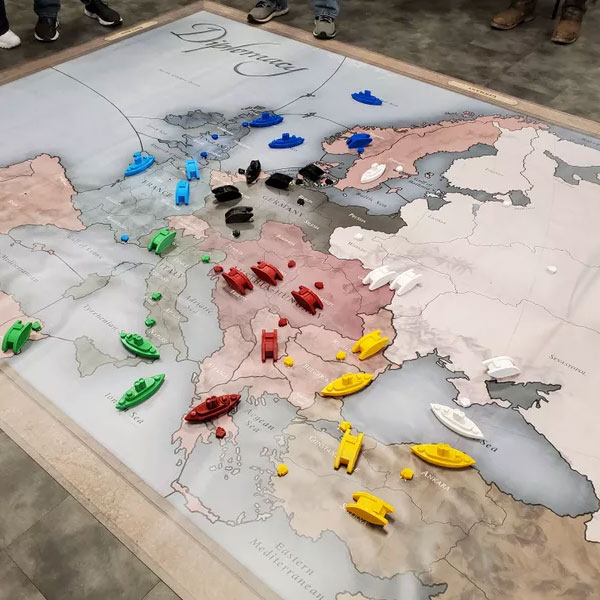
How to combine mechanics in game design
One of the exciting aspects of board game design is the way in which, once you understand what are the different types of board game mechanics, you can combine them in a variety of ways to create unique and innovative experiences for your players. By merging and juxtaposing a range of mechanics from different genres—or even introducing new mechanics altogether—you can push the boundaries of what is possible in board game design. This creativity and experimentation is really the heart and soul of what board game designers do. Experimenting and recombining elements in fresh and surprising ways is what leads to something exciting and new which will grab your potential players’ imaginations and keep the hobby vibrant and growing.
Just as every novel—unique as it may be and regardless of genre—is created by combining and recombining the same 26 letters of the alphabet that every other writer has at their disposal, so it is with game design. Don’t think because you have only a dozen mechanics, a recognizable theme, or a limited range of components, you can’t create a truly original game that will take the world by storm. You can. It’s not what you’ve got that makes the difference. It’s what you do with it. That’s another reason a world-class game can be made on a shoestring budget and many games with “all the frills” fall flat.
Playtesting and iteration
We’re going to say this again because we just can’t overemphasize it: when developing your ideas and choosing your mechanics, playtesting is a vital part of the game design process, allowing you to refine and fine-tune your game’s mechanics to make sure that you end up with a balanced and enjoyable experience to offer your players. Through playtesting, you create opportunities to gather feedback from players, identify potential issues or imbalances, and make iterative adjustments to improve the mechanics and overall gameplay.
Playtesting is a repeat process. Test your game several times with different player groups—ages, interests, experience—and refine your game accordingly. Watch the play when you can observe the players’ reactions. Ask yourself when everyone seems enthused and engaged and when interest flags or disputes over unclear rules break out. Offer the playtesters questionnaires to fill in and open feedback forms so they can tell you what the experience was like for them and what they’d like to see improved. This iterative approach helps create games that are challenging, fair, and engaging for players of all skill levels.
Talk to us! We're here to help...
If you’re interested in learning about what are the different kinds of board game mechanics, chances are that you want to design your own board game, right? Well, if that’s the case, you’ve landed on the right square! At QinPrinting, we adore board games just as much as any other enthusiast. It’s a major motive behind why we invested so much in our comprehensive board game creation service.
We do way more than just print boards. Our expert and experienced team will work with you from the start, to create a perfect prototype, help you design and print your rule book, and we’ll even manufacture custom components for your game including tiles, cards, dice, figures, miniatures, and more. And we complete the entire package with a beautiful custom printed game box. In short, we’re more than a printing service: we offer a complete board game manufacturing service.
Sound interesting? Get in touch with us today to discuss your ideas or for a no-obligation quote on your project. One of our experts will be happy to explain how we can help realize your dream of a beautiful, unique, custom board game. We look forward to sharing your enthusiasm and putting our experience, knowledge, and state-of-the-art technology at your disposal. Let’s talk! Just give us a call on +86 21 6538 1716 (bearing in mind time zones) or shoot us an email to [email protected] and we’ll be delighted to discuss your project and see how we can help.





